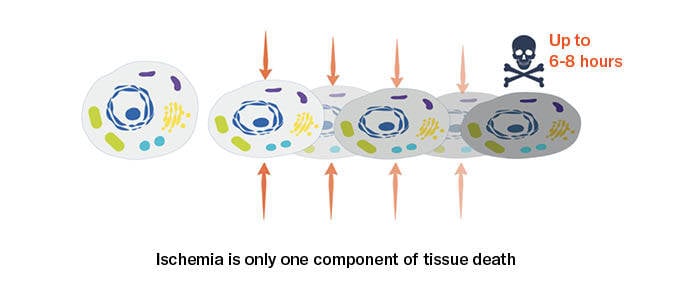For years, people believed that pressure injuries were simply caused by a lack of oxygen from prolonged sitting or lying in one position. But new research tells a different story—one that directly impacts how we prevent and manage these wounds. It turns out that the physical deformation of cells plays a major role in tissue damage, raising an important question: Are pressure injuries caused by oxygen deprivation, the crushing force on soft tissues, or both? Understanding this could change the way we think about skin protection and wheelchair seating. Let’s dive into the science behind pressure injuries—and why deformation may be the real culprit.
Do cells of the skin and soft tissue die because they are deprived of oxygen (ischemia) or because they are deformed (deformation)? Or both?
In the past, we thought pressure injuries were caused by ischemia alone, as a result of external forces.

Tissue ischemia is a decreased level of oxygen deliverability by the bloodstream that results in cell hypoxia.
From the seated posture, this occurs as a result of prolonged compression of the tissue.
High tissue deformations result in cell damage on a microscopic level within just a few minutes, although it may take hours of sustained loading for the damage to become clinically visible.

It’s not just the blood flow we are worried about anymore!
Studies have shown that when ischemia was taken out of the equation and the cellular structure was placed under direct deformation only, the cells died within MINUTES, which means… deformation is the culprit! It kills cells and tissues in multiple ways.
Cellular deformation is the process of permanently changing the shape or distorting the cellular structure.
In the seated posture this happens from compression, shear stress, and strain.

While ischemia was once thought to be the primary cause of pressure injuries, studies now highlight the significant role of cellular deformation. High tissue deformations can damage cells within minutes, even in the absence of ischemia. This means that preventing pressure injuries requires more than just relieving pressure; it also involves minimizing shear stress, strain, and direct deformation. Understanding these mechanisms allows for better prevention strategies, ultimately protecting skin and soft tissues from irreversible damage.
Want to learn more about pressure management and the prevention of pressure injuries? See our comprehensive digital Pressure Management Guide.

Commercial Product Manager - Permobil Americas
Nicole B. LaBerge, PT, ATP is a Physical Therapist with 18 years of experience in a variety of clinical settings. She currently works for Permobil as a Commercial Product Manager of Seating and Positioning products. Her past clinical practice has included seating and mobility for adult and pediatric populations, with a focus in neurological rehabilitation, power standing and wound care. Nicole has presented at the State and International Levels, has multiple publications in peer reviewed journals and enjoys sharing her passion for patient advocacy, efficiency, and clinical outcomes. She served as an Executive Board Member for the Clinician Task Force for 3 years and is currently an active member in the CTF.

